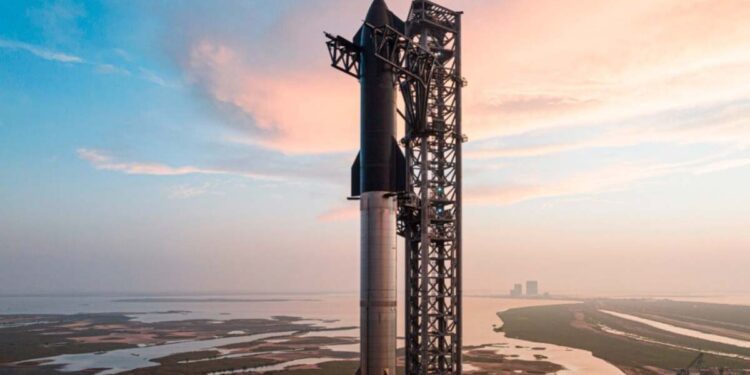After four tests, SpaceX has successfully completed its Starship revolutionary spacecraft test. This milestone is a crucial (and necessary) step towards the goal of taking humans back to the Moon and eventually to Mars.
Elon Musk’s company has signed contracts with NASA to collaborate on their Artemis missions, and have a reusable spacecraft, the true innovation proposed by SpaceX.
Now that it has been achieved, it is time to talk about the future planned for Starship, the lunar missions, and the ambitious journey to Mars that Elon Musk flirts with, as well as the impact it will have on NASA’s plans to return to the Moon in 2026.
The new era of reusable rockets
Starship, the largest rocket ever built, is a fully reusable launch system designed by SpaceX for interplanetary missions. **Standing at 71 meters tall and powered by 33 Raptor engines** that run on methane, Starship promises to transform our ability to explore deep space.
Next mission, the Moon
One of the most immediate goals for Starship is to support NASA’s Artemis program, which aims to bring humans back to the Moon in 2026.
Starship will be crucial in this mission by serving as the landing module that will transport astronauts from lunar orbit to the surface. Starship’s ability to carry large amounts of cargo and its reusable design make it a key piece in establishing a sustainable human presence on the Moon.
The dream: Mars
The long-term plan for Starship is much more ambitious: to take humans to Mars. Elon Musk, CEO of SpaceX, has repeatedly stated that his vision is to **turn humanity into a multiplanetary species**.
Starship’s ability to carry up to 100 people and its design to be reused countless times are essential features to make this mission viable.
Challenges and failures in development
The development of Starship has not been without challenges. Each test has been an opportunity to learn and improve. From explosions on the launch pad to failures in reentry, SpaceX has faced and overcome numerous obstacles.
The early tests of **Starship were marked by a series of explosions and failures**. These incidents, although costly and spectacular, provided valuable data that has been crucial to improving the design and safety of the spacecraft.
The road to Mars is paved with constant innovation. SpaceX continues to improve Starship technology, focusing on aspects such as heat resistance during reentry, engine efficiency, and rapid reuse capability. These advances will not only make interplanetary missions possible, but will also significantly reduce costs, making space exploration more accessible.
The fourth integrated test, known as IFT-4, conducted this week, has been the most successful to date. The launch from the Boca Chica test site in Texas was nearly perfect. Despite a failure of one of the engines, the redundancy of the design allowed the mission to continue without issues. The separation of the two sections, Super Heavy and Starship, occurred as planned, and the Super Heavy stage achieved a controlled landing in the Gulf of Mexico.
The success of IFT-4 has brought **SpaceX closer to its goal of making Starship an operational and realistic vehicle**. With each test, the company is one step closer to making humanity’s dreams of exploring and colonizing other planets a reality.


